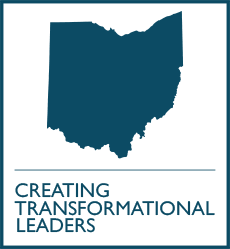Faculty Guide
1. Engage your senior-level residents/providers in developing the session and facilitating discussion to gain their buy-in for the program.
2. In preparation for a one-hour session, consider one of the following options:
- Show film (20 minutes) in a large group and discuss in small break-out groups
- After showing the film, have a panel of caregivers and/or experienced interdisciplinary providers who work with caregivers discuss the issues
- Have learners view the film on their own time in preparation for small group and/or panel discussion
3. Introduce the film before it is viewed by learners.
4. Select 3-5 discussion questions from the list below that best fits your learners’ needs.
- Which family’s story in the film touched you the most? Why?
- What in the film surprised you?
- What are some of the gifts that the families in the film experienced through their caregiving journeys?
- The caregivers telling their stories in the film made some comments about the physicians/providers caring for their loved ones.
- Which comments were memorable to you?
- What are some opportunities for improving care that you can think of from these comments?
- What recommendations would you have for healthcare providers based on the experiences the caregivers described? What could have been done differently?
- What cases in your clinical practice have you had or witnessed involving caregivers? How do these cases compare to the situations depicted in the film?
- How can we help families overcome challenges (diarrhea, constipation, med changes, noticing decline, doctor appointments) and to help them find the joy during difficult times?
- What are ways we can help from a physician/provider standpoint regarding how to get in their “living room” to listen to their needs and concerns, and congratulate them on the work they are doing?
- What resources are available to give caregivers a break or escape during constant 24 hour care when they are overwhelmed? (For example, adult day care, support groups, emergency line in order to talk with someone. )
- How can we comfortably refer these patients to palliative care and hospice and feel that we are still giving them our best efforts from a physician standpoint?
- From the families’ stories, did you gain an appreciation for the essence of who the patient was as a person? Please describe.
- What is your role/responsibility to caregivers?
- What biases or concerns do you have regarding caregivers?
- As a busy resident/health provider you have limited time with the patient, how can you establish meaningful communication with their caregiver? What is your role on the team when you have little continuity with the patient?
- What did you learn from the film that will help you in your practice?
Building Caregiver Partnerships
This site contains a free compendium of educational tools and resources on issues of family caregiving for health professions faculty, providers and students.
Co-sponsored with Summa Health and funded by the Arthur Vining Davis Foundations.


